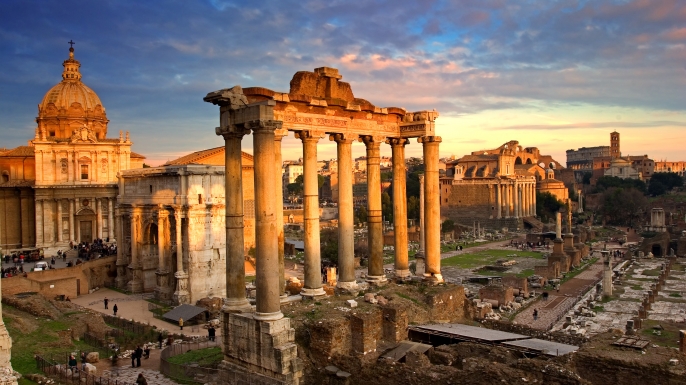
PHOTO: history.com
In most history classes, the story of Italy begins with the Romans, but the Romans weren’t the first people to live in ancient Italy. Who did?
Well, they were called the Etruscans, and they had their own fully-formed, complex society before the Romans came barging in. The Etruscans lived just north in Rome, in Tuscany. Originally, they just lived one-room huts on the Italian plateau. They herded pigs, sheep, and cattle, and farmed all sorts of wheat crops. The Romans would like you to believe that that’s how they found the Etruscans, but that couldn’t be farther from the truth.
Over four centuries, these little villages of huts grew into bustling ancient metropolises. The Etruscans dominated Italy, trading with other flourishing cultures like Greece and the Near East. They traded iron tools and weapons, Etruscan pottery, gold, and silver across the Alps to the Carthaginians, Phoenicians, Greeks, and other nations, and imported slaves, raw materials, and Greek pottery.
Who Were These Guys, Anyway?
The Etruscan government began as a monarchy, but eventually evolved into a sophisticated oligarchy, or rule of a few elite members of society. Different Etruscan cities met annually in what was called “The Etruscan League”, much like Greece’s “Peloponnesian League”. The cities traded with each other, fought each other, and competed over resources and trade routes.They were a polytheistic society, worshiping all sorts of gods that were thought to govern everyday life. They had their own pantheon, but also readily adopted the Greek pantheon, which would eventually translate to the Romans. The Etruscans were famous for their augury (omen-reading from birds and weather), and haruspicy (reading the entrails of sacrificed animals). Later, when Rome conquered Italy, Etruscan sorcerers were highly prized members of Roman households.
But the Etruscans were most famous for their art, namely their gorgeous tomb paintings, bucchero pottery, and bronze working. Most Etruscan art dates to the early 7th century BC.
The tomb paintings were a luxury that could only be afforded by the rich. The paintings were applied either directly to the tomb wall, or otherwise to a thin base layer of plaster. Artists used bright, vibrant colors that still blaze on tomb walls today, depicting scenes of music, hunting, sports, processions, dining, and dancing. Sometimes, the tombs also depict famous battles. These paintings tell us a lot about Etruscan life and social attitudes. For instance, according to paintings of married women at banquets and their accompanying inscriptions, Etruscan women were fairly equal to men in comparison to other contemporary cultures.
The Etruscans were also famous for their glossy black pottery, called “Bucchero”. They created all sorts of shapes, including bowls, cups, jugs, utensils, and even animals and people. Etruscan pottery was widely traded across the ancient world.Bronze work was another specialty, and had been since the birth of Etruscan civilization. They made all sorts of items out of bronze, but they were most famous for their intricate, highly-skilled figurines. Few examples have survived, but the most famous surviving piece is the Chimera of Arezzo.
![The Chimera of Arezzo. [PHOTO: panoramio.com]](https://historythings.com/wp-content/uploads/2017/03/67580577-1024x575.jpg)
The Chimera of Arezzo. [PHOTO: panoramio.com]
The Etruscans and Rome
Eventually Rome would begin her conquest of Italy. The Roman Empire began absorbing the Etruscans in 396 BC. Ancient Rome owes a lot to the Etruscans, from its pantheon of gods to its architecture. The Tuscan column, arched gate, private villa with atrium, tombs, and large-scale temples would become Roman architectural staples.
The Romans would also adopt the Etruscan robe as their own ‘toga’, speak the Etruscan language, write with an adaption of their alphabet, and turn the Etruscan victory procession into the Roman Triumph. The Etruscan way of laying out cities would become Roman efficiency, and Etruscan augury and soothsaying would become key components of Roman religion. No other early civilization in history besides Greece has contributed so much to the Empire of Ancient Rome.


![The Etruscan civilization. [PHOTO: ancient.eu]](https://historythings.com/wp-content/uploads/2017/03/display-119.jpg)
